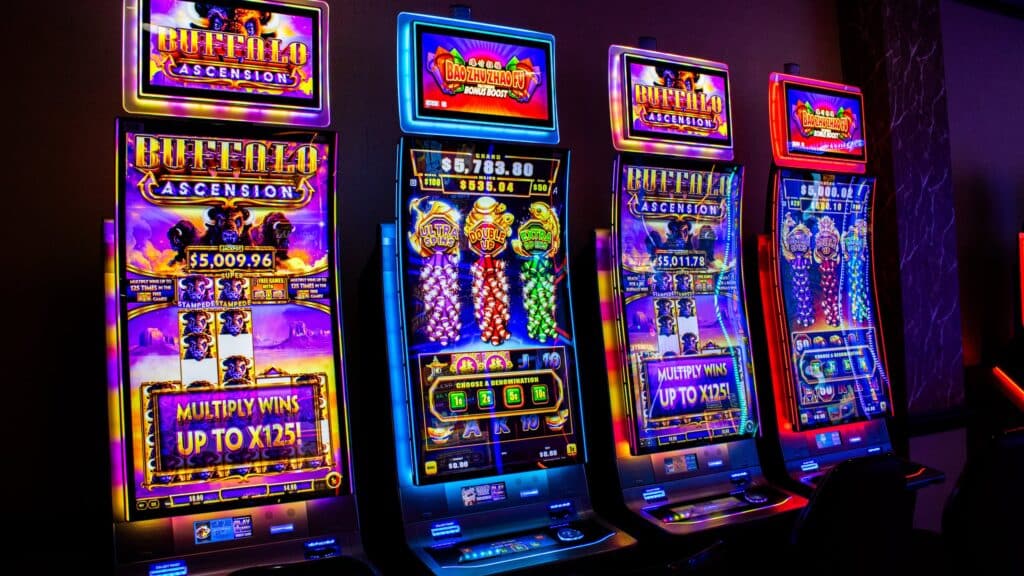Slots are by far the most popular casino games, and for good reason—they offer exciting gameplay, a wide variety of themes, and the potential for big wins. However, not all slots are created equal. One of the key factors that can significantly affect your gaming experience is game volatility. Understanding volatility is crucial for players, especially those who want to maximize their chances of winning and tailor their play style to their preferences. In this article, we’ll dive deep into the concept of volatility in slot machines, how it impacts gameplay, and how you can use it to your advantage.
What is Game Volatility in Slots?
Volatility, also known as variance, refers to the risk level of a particular slot game. It measures the frequency and size of payouts you can expect while playing. The volatility of a slot determines how often you can expect to hit wins, as well as the size of those wins. Understanding volatility helps players manage their bankroll and choose the right games that suit their risk tolerance and gaming goals.
Low Volatility Slots
Low volatility slots are known for offering frequent but smaller payouts. Players who prefer these games can expect consistent returns, though the wins are typically modest. These types of slots are ideal for beginners or casual players who want to play for a longer time without depleting their bankroll too quickly.
Examples of Low Volatility Slots:
- Games like Starburst and Blood Suckers offer steady wins and are popular among players who prefer a more relaxed style of play.
- Low volatility slots often feature simple gameplay mechanics and lower betting ranges, making them accessible for players with smaller budgets.
High Volatility Slots
High volatility slots are much more unpredictable. While they can provide significant payouts, these wins occur less frequently. Players who choose high volatility slots should be prepared for longer losing streaks, but with the potential for huge wins on the rare occasions that the big payouts hit. These games are perfect for risk-takers and experienced players who are looking for the chance to win big in exchange for a higher risk.
Examples of High Volatility Slots:
- Games like Dead or Alive II and Book of Dead are well-known for their high volatility and large jackpots, though players may need to go through longer dry spells before hitting significant wins.
- These games often have higher betting limits, making them suitable for players who have larger bankrolls and a tolerance for risk.
Medium Volatility Slots
Medium volatility slots offer a balance between the frequency of payouts and the size of those payouts. These games provide a mix of smaller and larger wins, making them appealing for players who want the excitement of high volatility but with a bit more consistency in terms of returns. Players who prefer medium volatility slots often look for a good balance between risk and reward.
Examples of Medium Volatility Slots:
- Games like Gonzo’s Quest and Thunderstruck II provide a mix of frequent smaller wins and the potential for larger payouts, making them a good choice for players who want a varied experience.
How Does Volatility Affect Your Slot Strategy?
Volatility significantly impacts how you should approach your gameplay. It influences your strategy, betting size, and expectations for your session. By choosing a slot game with the right volatility level, you can ensure that your gaming experience aligns with your goals and preferences. Below, we’ll explore how to develop a slot strategy based on game volatility.
Choosing the Right Volatility for Your Goals
One of the first steps in developing your strategy is identifying your goals. If you’re looking to play for a longer time without experiencing too many dry spells, low volatility games are the best choice. They allow you to stretch your bankroll further and enjoy consistent action. On the other hand, if your goal is to hit a large jackpot, high volatility slots are the way to go. While they come with higher risk, the potential rewards are worth the gamble.
Bankroll Management and Volatility
Bankroll management is a critical aspect of any gambling strategy, and volatility plays a significant role in this. In high volatility slots, the swings in your bankroll can be large, as big wins are less frequent. This means you need to be prepared for long losing streaks before hitting a major payout. To manage this, consider lowering your bet size and playing for longer periods when playing high volatility games.
For low volatility slots, you may want to increase your bet size slightly to capitalize on the frequent but smaller wins. Since these games are more forgiving, you can usually withstand longer sessions with fewer risks to your bankroll.
How to Adjust Bet Size Based on Volatility
Your bet size should be adjusted based on the volatility of the slot game you are playing. If you are playing a low volatility slot, you can afford to place smaller bets, since you will win more frequently. On the flip side, if you are playing a high volatility slot, you may want to reduce your bet size to prolong your session, as the big wins may not come as often. Here are a few tips:
- Low Volatility: Place smaller bets to extend your gameplay. This is especially beneficial if you want to play for a longer duration without risking too much of your bankroll.
- High Volatility: Consider larger bets if your bankroll allows, but also be mindful of your balance. Larger bets can pay off big when the game hits a jackpot, but it’s also wise to lower your bets during losing streaks to prevent your bankroll from depleting too quickly.
Volatility and Slot Payouts: Understanding RTP
Another important factor that affects your slot experience is the Return to Player (RTP) percentage. RTP is the theoretical percentage of the total wagers that a slot machine will pay back to players over time. While the RTP percentage is independent of volatility, it’s important to understand how both interact. High volatility slots typically have a higher potential for large payouts, but this also means that the RTP is spread over fewer, larger wins. Low volatility slots, on the other hand, may offer smaller but more consistent payouts over time.
Example: A slot game with an RTP of 96% and low volatility will likely pay out small amounts frequently. In contrast, a game with the same RTP but high volatility may only pay out large sums sporadically. In both cases, the long-term return is similar, but the experience is vastly different.
Slot Payout Calculation
To understand how RTP affects your play, let’s break down a simple payout calculation. Suppose you’re playing a slot with an RTP of 96% and a $1 bet per spin. Over 1,000 spins, the expected return would be:
Expected Return = Total Bet Amount x RTP
So, in this example:
Expected Return = $1,000 x 0.96 = $960
This means, over 1,000 spins, you can expect to receive $960 back from your $1,000 wagered. Keep in mind that this is a long-term average, and the actual outcome of each session will vary.
Fun Facts About Slot Volatility
Here are a few fun facts to keep in mind when considering volatility and slot games:
- High volatility slots are often designed with big bonus rounds and jackpots in mind. They tend to have features like free spins, multipliers, and expanding wilds to increase the potential for big wins.
- Low volatility slots are often tied to classic themes, such as fruit machines or simple 3-reel slots, providing a nostalgic experience for players.
- Slot game providers often release games with varying volatility levels to cater to different player preferences, so there’s always a game for every type of player.
Conclusion: Mastering Volatility for Maximum Enjoyment
Understanding the impact of game volatility on slots is crucial for both beginners and experienced players. Whether you prefer the frequent but smaller wins of low volatility games, the high-risk, high-reward nature of high volatility slots, or a balanced approach with medium volatility games, knowing how to manage your bankroll and adjust your strategy accordingly is key to a successful and enjoyable experience.
By selecting games that align with your goals and comfort level, adjusting your bet size, and understanding the relationship between volatility and RTP, you can greatly enhance your chances of success. Remember that slot gaming is about having fun, so choose the volatility that best suits your preferences, and enjoy the ride!



